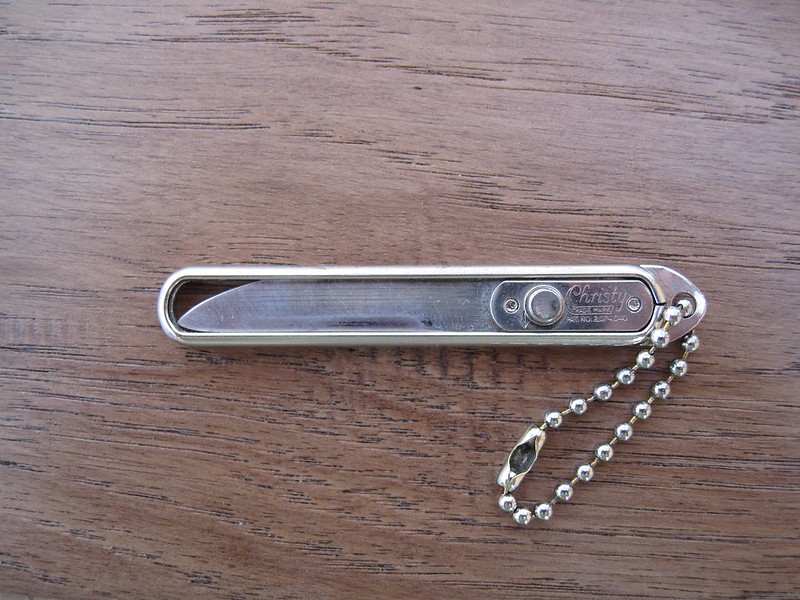I have become something of a family historian as an offshoot of being the person in my family that inherits pocket knives of all types. One of the items that a fair number of family members carried is the little sliding Christy Knife. I am trying to match up several of these that were given to me in an old shoe box to family members who would have carried them.
I had not really given much thought to them, but I have noticed that there are some variations. Some have a sheet metal bail, others a bent wire bail; some are single bevel blades, some double bevel: some have stainless blades, some carbon; some have a patent number, others do not etc. Has anyone tried to figure out when changes were made on these? Thanks!
I had not really given much thought to them, but I have noticed that there are some variations. Some have a sheet metal bail, others a bent wire bail; some are single bevel blades, some double bevel: some have stainless blades, some carbon; some have a patent number, others do not etc. Has anyone tried to figure out when changes were made on these? Thanks!




